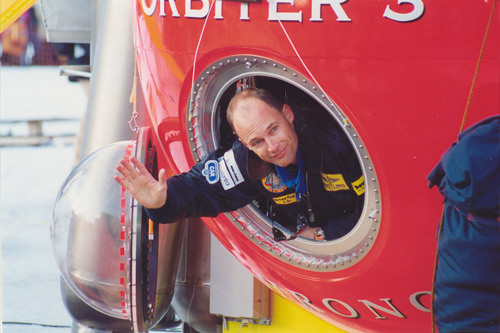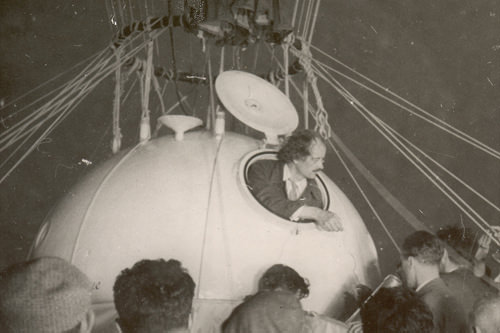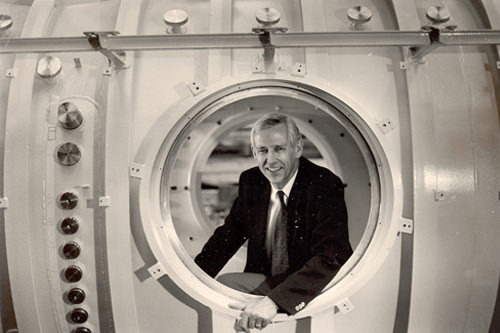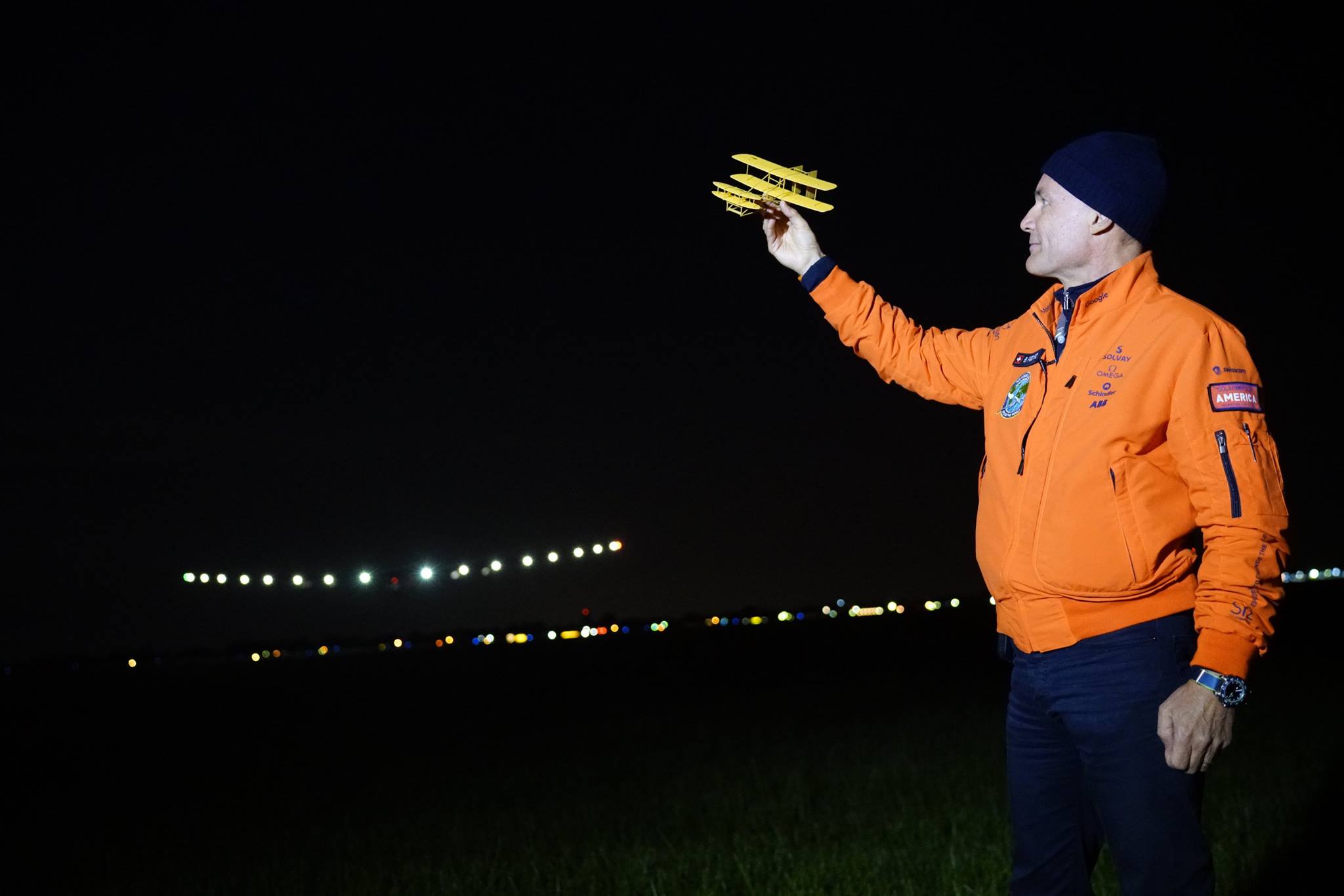Thessaloniki gets ready for its metro launch in November
The underground rapid transit lines have been under construction for almost two decades due to various project delays
 TheMayor.EU logo
TheMayor.EU logo A talk with the first man to circumnavigate the globe with a solar plane, on whether sustainability can also be profitable
In 1999 Bertrand Piccard became the first person to circumnavigate the globe with a hot air balloon. The only control he and his co-pilot, Brian Jones, had was ballast and fuel to correct altitude and catch temperamental jet streams. And fuel was running low for much of the flight.
To succeed, the duo relied on their equipment, steady nerves and a team of meteorologists in Geneva to help them navigate the air currents. On many occasions, when the odds were against them, they had to take a leap of faith.
Finally, after 19 days in the air, the balloon touched down in Egypt with less than 1% of its fuel remaining.
For this amazing feat, the pair burned 3.7 tons of propane over the entire world. They emitted an incredible amount of CO2 and for Piccard, this would not do. So he decided to fly around the world again. This time, with no fuel, using the power of the sun.
Thus, in 2016, he completed another first - circumnavigating the globe using a solar-powered aircraft, in a project called Solar Impulse. But it was still not enough. Solar Impulse was a vehicle meant to show the power of renewable energy to businesses and governments.

Bertrand Piccard with the Breitling Orbiter 3, the balloon that flew around the world,
Source: Solar Impulse Foundation
Yet, after the initial euphoria from the feat died down, everyone went back to business as usual. Not for Piccard. The same year, he committed the Solar Impulse Foundation to find 1,000 working solutions for fighting climate change. In 2021 they did. They also released a guide for cities.
In an interview for TheMayor.EU, he explained that his goal was to find a way to bridge the gap between profitable and ecological – a gap that has been growing for decades with lobbying polluters spending incredible amounts of money to convince us that burning the planet’s resources is ultimately a net gain.
Piccard says that the solutions are already here and they work. The only thing governments and businesses need to do is stop being complacent and reliant on what they know. Instead, he proposes we drop the ballast holding us down and take a leap of faith.
The Piccard family history often reads like an adventure novel, with obstacles, feats of engineering, perseverance, and bravery. According to Bertrand, they are a group of people who carry the unofficial motto: “When we’re told that something is impossible, that’s exactly why we try to do it”.
In 1931, his grandfather, the physicist Auguste Piccard, became the first person to fly into the stratosphere. He did it to measure cosmic rays interacting with a low atmospheric mass – 16 kilometres up in the sky with lab equipment. But he first invented the pressurised cabin as there wouldn’t be enough air to breathe at that altitude. With that, he made modern air travel at high altitudes with more efficient fuel use possible.
 Auguste Piccard with his pressurised cabin, Source: Solar Impulse Foundation
Auguste Piccard with his pressurised cabin, Source: Solar Impulse Foundation
In 1960, his father, the engineer Jacques Piccard, became the first man to drop into the Mariana Trench, the deepest place on Earth, with the Challenger Deep mission. The vessel known as a bathyscaphe was pioneered by Auguste and perfected by Jacques. During the mission, the crew had to find life in the depths, to de-sway governments from dumping radioactive waste at sea. They found life.
Fun fact: the Star Trek character Captain Jean-Luc Picard was named after Auguste and his twin brother Jean Felix, and is supposed to be a descendant of the family of adventurers.
 Jacques Piccard, posing with a bathyscaphe, Source: Solar Impulse Foundation
Jacques Piccard, posing with a bathyscaphe, Source: Solar Impulse Foundation
It follows that whatever Bertrand decided to do with his life, he had an enormous legacy to live up to. As a kid, he was afraid of heights but in true Piccard fashion – he took to hand gliding at the age of 16. Later he became a psychiatrist but that didn’t stop him from mastering the skies like his family.
Bertrand said that while growing up, apart from the adventures, his family was extremely concerned about pollution as something dangerous for humankind. In the 1960s and 1970s, however, people who wanted to protect the environment, including his father and grandfather faced the problem that there weren’t enough viable solutions on a global scale.
"I always remember my father being very frustrated because he knew that something had to be done, but there were no solutions that were economically viable and attractive. He bought a new type of shower to save on water. But it was saving so much water that you didn’t have enough to get rid of the soap. So of course it was not attractive.
Also, there was this big gap between people who wanted to protect the environment and people who wanted to have a good life.”
Until recently, environmental solutions were not attractive to the general population, industry, governments or the economy. This has also been the prevailing narrative. “For the past 50 years we’ve been hearing that protecting the environment is expensive, difficult, not enough solutions, we need to sacrifice mobility of comfort or our economic growth.”
He pointed out there is more pollution and CO2 in the atmosphere now than at the start of the environmentalist movement. Yet, things have changed. Today, there are much more solutions than during the life of Jacques Piccard – Bertrand’s father - but the gap between ecology and the economy is still there.
This is why the Solar Impulse Foundation set out to find 1,000 working solutions, that are both sustainable, exciting, profitable and an investment opportunity. “To show that the world of economy, politics, industry and finance could start supporting ecological movements because it is an advantage for them.”
The development of sustainable solutions has only recently exploded. Bertrand said that five years ago he could not have been able to prove that sustainability was profitable.
"Today, the cheapest source of energy in the EU without any need for subsidies is solar. Solar power plants in construction in Portugal with a business plan of 1.5 cents per kilowatt hour of electricity. Offshore wind in the EU is the second cheapest source of energy. If you add the biogas, made with waste from organic waste, you can produce gas that is cheaper than the gas that is coming from Russia.
Hydroelectricity is more expensive but it is a good way to store renewable energy by pumping the water up the dams during daytime and releasing it at peak demand in the evening.”
Bertrand pointed out that because human society is so reliant on the internal combustion engine we waste close to ¾ of the energy we produce. “When working with renewables and working on how to reduce energy waste - you are making a lot of profit.“
"You put 60 litres of gasoline in your car at 2 euros per littre, but in the end, you have an efficiency that is five times less. 80% of the energy is lost due to friction, resistance, heat dissipation and so on. In an electric car, you are losing 3%.”
Bertrand explained that during the development of the Solar Impulse plane, which had no fuel – only photovoltaic panels, the team was astonished at the efficiency of electric engines. “We flew around the world with the power of an electric scooter.”
"This is really the two legs on which we have to walk today – one is going on renewables; the second one is efficiency. And the truth is - We don’t need to produce as much energy.”
 The Solar Impulse Plane flying over Egypt, Source: Solar Impulse Foundation
The Solar Impulse Plane flying over Egypt, Source: Solar Impulse Foundation
Bertrand hammered the point that there are enough solutions in the world that environmental and sustainability options make so much practical sense that anything else is simply bad business.
For instance, today a developer can insulate a building so well that with a heat pump – it can become carbon neutral. That would add around 10% to the cost of construction and pay for itself in 5 to 6 years. Cities, meanwhile, could mandate that new buildings be made with 100% recycled concrete and cut back on construction emissions.
With the lifespan of a building at around 50 years skipping these measures now will leave urban centres filled with polluting buildings well into the 21st century.
So why aren’t we doing it? Well, according to him, it’s a mix of prejudice towards new technologies, laziness and inertia. For instance, a lot of building regulators allow for between 5% and 50% use of recycled demolition materials. This is comparable to a license to pollute because the technology is there, it’s available and it's profitable. “Why put more CO2 in the atmosphere, plastics in the ocean and etc, when you could stop doing that and make more money?”
"It is very easy for an administrator to maintain the status quo instead of using the newest solutions. The technology is here but the mind-sets are not.”
There’s a lot that cities can do – tried and true methods listed in Solar Impulse’s Solutions Guide for Cities. Many of these Bertrand has implemented in his own house.
Some of the highlights include a system that can detect leaks in the public water network. Another solution recovers the heat from showers going to the drain and gives it back to the shower. For energy on a mass scale, cities can create a system where people charge their electric cars during the day at peak solar production and discharge them onto the grid at night during peak demand. So, instead of building large battery plants, local governments can use what is already available – vehicles.
"You can put geothermal heat pumps in the centre of cities and connect them to central heating – reducing heat bills by up to three times. I did that but with my own heat pump on my house.”
These solutions aren’t just for the climate of northern Europe – the South can benefit from district cooling instead of individual air conditioners.
"Governments now are saying we have to be carbon neutral by 2050. But they have no idea how to reach that goal. So they may say we have to stop fossil fuels. Okay, that’s a good goal. But how do you do it? Our work is focused on how to reach the goal.”
In many ways, Bertrand Piccard is very similar to his ancestors – he is daring, driven and determined to go beyond. But he is also different in one key aspect – he’s looking outwards. Auguste was a physicist who conquered the contemporary understandings and Jacques was an engineer who pushed the limits of what was technically feasible at his time - Bertrand is a psychiatrist.
While he did the technical and endurance feats of circumnavigating the globe with a balloon and solar-powered aeroplane, maybe his big achievement, convincing the world to adopt sustainability, is yet to come.
And as the Piccards say: “When we’re told that something is impossible, that’s exactly why we try to do it.”
 Bertrand with a model of the Wright brothers' plane after the Solar Impulse plane landing,
Bertrand with a model of the Wright brothers' plane after the Solar Impulse plane landing,
Source: Solar Impulse Foundation

The underground rapid transit lines have been under construction for almost two decades due to various project delays

Now you can get your wine in Talence by paying directly in Bitcoin

That’s because the state has to spend money on updating the railway infrastructure rather than subsidizing the cost of the popular pass

Rethinking renewable energy sources for the urban landscape

The examples, compiled by Beyond Fossil Fuels, can inform and inspire communities and entrepreneurs that still feel trepidation at the prospect of energy transition

Now you can get your wine in Talence by paying directly in Bitcoin

The 10th European Conference on Sustainable Cities and Towns (ESCT) sets the stage for stronger cooperation between the EU, national and local level to fast track Europe's transition to climate neutrality.

At least, that’s the promise made by the mayor of Paris, Anne Hidalgo

The underground rapid transit lines have been under construction for almost two decades due to various project delays

At least, that’s the promise made by the mayor of Paris, Anne Hidalgo

Hostal de Pinós is located in the geographical centre of the autonomous region

Despite its church-y name, the district has long been known as the hangout spot for the artsy crowds

Urban dwellers across the EU are having a say in making their surroundings friendlier to people and the environment.

Forests in the EU can help green the European construction industry and bolster a continent-wide push for architectural improvements.

Apply by 10 November and do your part for the transformation of European public spaces

An interview with the Mayor of a Polish city that seeks to reinvent itself

An interview with the newly elected ICLEI President and Mayor of Malmö

A conversation with the Mayor of Lisbon about the spirit and dimensions of innovation present in the Portuguese capital














